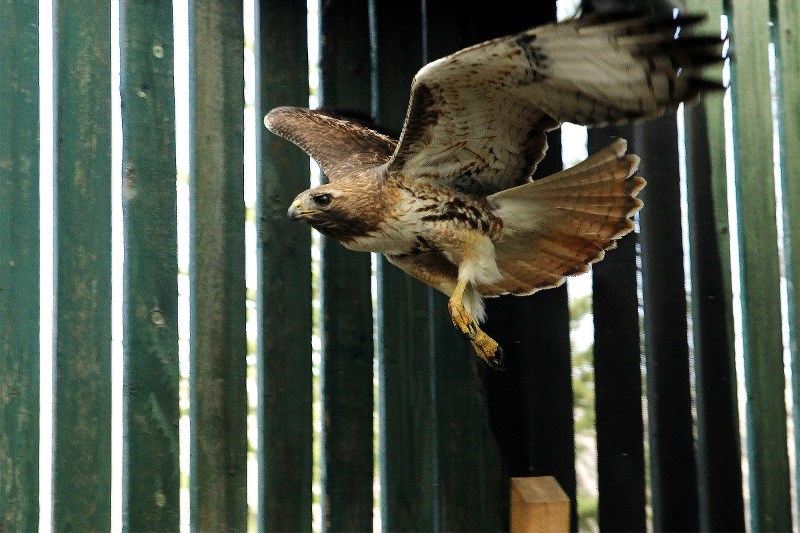The Alberta Institute of Wildlife Conservation (AIWC) has had up to 300 different wild animals in its care at a time during past summers. While baby hares, hawks and porcupines are just starting to drop or hatch, AIWC currently has 33 patients – this is the calm before the storm.
That’s why the organization kick-started its Wildlife Baby Shower May 1. The month-long fundraiser is aimed to give the conservation effort a buffer as it prepares for its busiest time of year.
Donations will go a long way, said Katrina Jansen, AIWC education and engagement co-ordinator – but so will helping people understand their responsibility in wildlife care.
“Humans have changed their environment so much that we’ve made it really hard for a lot of wildlife to actually survive and do well,” Jansen said.
She said 95 per cent of the time, animals are in care at AIWC due to human interactions – be it because of being tangled in barbed wire or fishing lines, window strikes, vehicle collisions, hitting power lines or exposure to toxins.
“There’s no better feeling than seeing, say, a red-tailed hawk go through so much – and suffer badly, in some cases – and then be able to get back into the wild,” she said.
“That sense of being able to free an animal to, hopefully, a long and healthy life – there’s nothing better than that.”
Still, that feeling doesn’t come without a price – literally. Some patients need up to 40 mealworms a day, which translates to a total of several thousand worms a week for all animals requiring them. Animals like beavers and skunks require more than that – a single beaver can cost upwards of $11,000 per year to care for.
Six full-time staff, 130 active volunteers and a staff veterinarian operate the small property located in Madden. Occasionally, AIWC receives large donations from the likes of Inter Pipeline and the Rotary Club of Cochrane, which can help create new enclosures. But much of the donations received are smaller and from individuals.
One of the best ways to help AIWC, according to Jansen, is to stay educated about wildlife. She points to baby hares in particular – which are one of AIWC’s most common guests.
A baby hare doesn’t have a scent, Jansen said, so its mother can leave it alone for hours while she collects food. Because of this, people will often mistakenly assume the baby hare has been abandoned and take it away from its den. This problem also exists with skunks and deer.
If you are unsure about a wild animal’s state, contact the AIWC hotline at 403-946-2361.
AIWC encourages engagement on all levels, said Jansen – volunteering, donating or attending different on-site talks and tours at its facility.
Donations can be made on the AIWC website, aiwc.ca, or through its GoFundMe and Kickstarter pages. The goal for the Wildlife Baby Shower is to raise $15,000.



